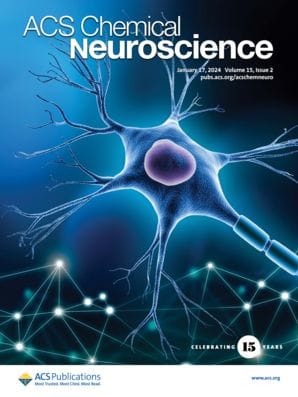Learn more about the diverse aspects of MDMA’s science—from its potential for neurotoxicity in developmental models to its unique effects on the serotonin system—in this special collection from ACS Chemical Neuroscience.

On June 4, 2024, the FDA’s Psychopharmacologic Drugs Advisory Committee will convene to review Lykos Therapeutics’ midomafetamine (MDMA) capsules, marking a potentially historic milestone in the treatment of PTSD. Readers may be more familiar with other names of MDMA including "E," "X," and "molly." This would be the first time in 25 years that a new therapy for PTSD has been considered by the committee. The event also reflects growing interest and clinical trial success demonstrating the therapeutic possibilities of psychedelic and entactogenic compounds (MDMA is an entactogen).
Lykos' midomafetamine, proposed for adults with PTSD, is supported by the extraordinary outcomes of the Phase III MAPP1 and MAPP2 trials, which have demonstrated significant improvements in PTSD symptoms and functional ability. Where most psychiatric trials result in squinting to see effects, the positive data here are clear. The meeting represents a significant step for MDMA-assisted therapy, positioning it at the forefront of entactogenic (and related psychedelic) medicine's entry into mainstream biopharma.
In conjunction with this pivotal event, ACS Chemical Neuroscience is highlighting a special collection of articles exploring the diverse aspects of MDMA’s science—from its potential for neurotoxicity in developmental models to its unique effects on the serotonin system. Key articles such as "Developmental Neurotoxicity Screen of Psychedelics and Other Drugs of Abuse in Larval Zebrafish (Danio rerio)" and "Wiring and Volume Transmission: An Overview of the Dual Modality for Serotonin Neurotransmission" provide critical insights into the biochemical pathways and physiological impacts of MDMA. ACS Chemical Neuroscience has been and remains one of the most active journals publishing in this space, cultivating rich discussions about the science, history, and ethics.
This curated collection serves not only as a repository of scientific inquiry but also as a bridge connecting the public and scientific community to both key historic and new research ahead of MDMA’s potential FDA approval. Readers can access these articles to gain a deeper understanding of the scientific dialog surrounding MDMA and its place in modern medicine.
For those interested in exploring these topics further, please explore ACS Chemical Neuroscience’s new Virtual Collection, MDMA: Neurochemical Perspectives on a Potential Breakthrough Therapy.

